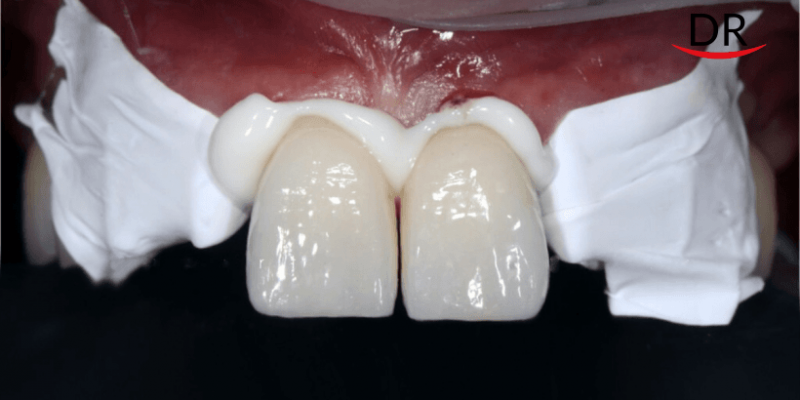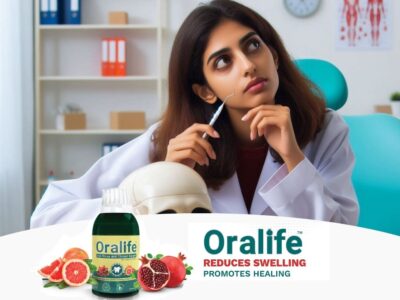Cementation is the final step of indirect restorations which, usually, we do not take very seriously – until the patient comes back with a dislodged crown repeatedly and we don’t understand where we went wrong! There are two objectives for cementation or luting 1 –
- to help retain the restoration in place and
- for a good marginal adaptation and seal.
If you are one of the many who only use GIC in their clinic, then take a look at various cements available along with their leading brand names, primary advantages & disadvantages, indications with literature supported recommendations and you will be in for a pleasant surprise!
Table 1. Overview of Cements 1,2
|
Cement Type |
Leading Brand Names |
Primary Strengths |
Primary Weaknesses |
|
Zinc Phosphate |
Fleck’sTM |
Long clinical experience |
Occasional postoperative sensitivity, High solubility, Low hardness |
|
Polycarboxylate |
Durelon TM |
Low fluoride ion release, Low postoperative sensitivity |
High solubility ,Low adhesion, Low hardness |
|
Conventional Glass Ionomer |
Ketac TM Cem Fuji 1® |
Fluoride ion release , Adhesion to tooth and metal Ease of use, Good routine cement |
Occasional postoperative sensitivity, Some moisture sensitivity, Marginal solubility |
|
Resin-Modified Glass Ionomer |
RelyX TM Luting RelyX TM Luting Plus Fuji PLUS TM |
Fluoride ion release , Adhesion to tooth and metal, Low or no marginal solubility, Ease of use, Low postoperative sensitivity , Good routine cement |
Swelling or linear expansion , Moisture sensitive powder |
|
Composite Resin
Total Etch cement system
Self – Etch Primer cement system
Self-Adhesive Cement System
|
Variolink® II
Panavia
RelyX TM Unicem Cement
|
High strength, Esthetics, Low solubility, High adhesion
High strength, Low solubility, High adhesion, No etching required on dentin, Low postoperative sensitivity
High strength, |
Technique sensitive, Requires use of separate etchant and/or primer and adhesives, Potential for postoperative sensitivity, Difficult clean up
Difficult clean up, Separate primer required
Limited clinical history, Available only in capsule delivery
|
Table 2. Indications Chart – Cement Recommendations 2,3,4
|
|
Zinc Phosphate |
Zinc Polycarboxylate |
Conventional Glass Ionomer |
Resin-Modified Glass Ionomer |
Composite-Resin Cement |
|
Metal or PFM crowns/bridge inlays/onlays/ SS pedo crowns/metal post |
X1 |
X1 |
X1 |
X1 |
X 3 |
|
Composite crowns / inlays / onlays |
__ |
__ |
__ |
__ |
X |
|
All-zirconia or alumina strengthened crowns/bridges / Zr pedo crowns |
__ |
__ |
X 2 |
X 2 |
X |
|
Lithium Disilicate all ceramic crowns / inlays/onlays |
__ |
__ |
__ |
__ |
X 4 |
|
Composite or ceramic laminates/ veneers/ fibre post |
__ |
__ |
__ |
__ |
X 4,5 |
|
Implant restorations |
X 6 |
X 6 |
__ |
__ |
X 6 |
1. Composite-resin cement should be used –
- For Maryland bridges
- If enough mechanical retention is not available (preparation height <3mm)
Zinc phosphate cements are not recommended for vital tooth preparations because of their acidic nature.
2. Composite-resin cement should be used –
- If aesthetic and wear resistance needs are assessed and GI-based cements will be insufficient and do not complement the restoration.
- If enough mechanical retention is not available (preparation height <3mm)
3. For most composite-resin cements, with the exception of some self-etching-based systems (i.e., RelyX Unicem), typically more work and effort is needed than for metal-based restorations that have sufficient built in retention. It also may increase the potential for patient sensitivity and difficulty in clean up and so must be handled with care.
4. Restorations made of ceramic materials must be preferably etched with hydrofluoric acid, silanated with silane coupling agent and then bonded to tooth structures.
5. Light-cure only systems are preferred to maximize potential for color stability. Self-cure systems or light-curable “base” components from dual-cure systems have greater potential for color change over time.
6. Zinc phosphate often is the cement of choice for final cementation of an implant restoration. GIC is not used in implant restorations because it is less retentive on the metallic abutment compared to its strong chemical bond on tooth.
Other cements used for implant restorations –
a. Polycarboxylate cement – It is used when –
- multiple splinted abutments are present,
- if no cantilevers or significant offset loads are present, and a “soft access” cement is desired,
- as a stronger provisional cement for the transitional prosthesis or individual acrylic transitional crown when zinc oxide eugenol appears insufficient.
b. Composite resin cement – It is used –
- to cement a post into an implant body to serve as an abutment for a cemented prosthesis
- when the abutment post is too short for adequate retention and prosthesis removal is not planned at a later date.
Special note– Cementation of provisional/transitional prosthesis.
Temporary crowns in conventional FPD or implant restorations are usually made of acrylic or composite. They are cemented with zinc oxide eugenol/non eugenol cements.
Eugenol cements are indicated for relief of pulpal sensitivity.
Non eugenol cements are used where subsequent reline and re-margination procedures maybe required or when final cementation is to be done with resin cement. This is because eugenol may inhibit the setting of the acrylic and resin when it is in unset state.
Table 3. Provisional cements
|
Eugenol cements |
Non eugenol cements |
|
TempoCem,Tempocem soft (DMG) |
Nogenol, Freegenol (GC America) |
|
Embonte, Embonte 2 (Dux Dental) |
Zone (Dux Dental) |
|
Flow-Temp (Premier Dental Products) |
Integrity TempGrip (Dentsply Caulk) |
|
TempBond (Kerr Corp.) |
TempBond Clear (Kerr Corp.) |
|
Trial Cement (Opotow Corp.) |
ProvicolTempoCem NE (VOCO) |
|
Rely X Temp E (3M ESPE) |
RelyX Temp NE(3M ESPE) |
|
Temrex ZOE plus (Temrex Corp.) |
TempoSIL 2 (Coltene) |
Here, we conclude part 1 of this guide. Stay tuned for part 2 where we will discuss cementation protocols for different types of prostheses and special clinical tips & tricks!
REFERENCES
1. Craig’s Restorative Dental Materials (Thirteenth Edition), 2012
2. Diaz-Arnold AM, Vargas MA, Haselton, DR. Current status of luting agents for fixed prosthodontics. J Prosthetic Dent 1999;81(2):135–41.
3. Wassell, R., Barker, D. & Steele, J. Crowns and other extra-coronal restorations: Try-in and cementation of crowns. Br Dent J 193, 17–28 (2002)
4. Principles of Fixed Implant Prosthodontics. Carl E. Misch, Dental Implant Prosthetics (Second Edition), 2015

















Comments